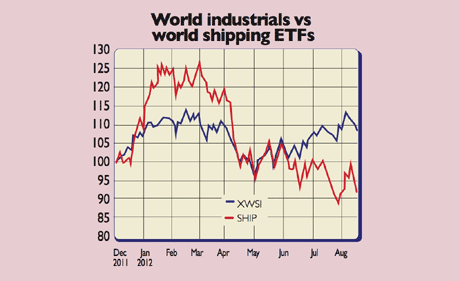'Dow theory' indicator flashes red
'Dow theory' has been used over the years to forecast when American stocks have reached their peak. And it's British equivalent is now warning investors to tread carefully. Paul Amery reports.

According to the so-called Dow theory, a bull market in stocks is suspect unless a rally in the Dow Jones industrial average of 30 stocks is "confirmed" by a similar move in a parallel index of transportation stocks.
The idea has logic behind it manufacturers need their goods to be shipped to market. So if the Dow Jones transportation average turns down while the industrial average is still rallying, watch out. Falling transport shares from mid-1999 gave an advance warning that the broader stockmarket was about to top out which it did in March 2000.
Now, once again, a divergence has appeared. The Dow industrials are currently up 11% for the year, while the transport average is down 2%.
MoneyWeek
Subscribe to MoneyWeek today and get your first six magazine issues absolutely FREE

Sign up to Money Morning
Don't miss the latest investment and personal finances news, market analysis, plus money-saving tips with our free twice-daily newsletter
Don't miss the latest investment and personal finances news, market analysis, plus money-saving tips with our free twice-daily newsletter
Dow Jones's industrial average, perhaps the best-known global stock index, isn't entirely true to its name. It includes several financials, tech stocks and retailers, as well as more traditional manufacturing concerns such as Boeing, Caterpillar, General Electric and Procter & Gamble.
The Dow also excludes Apple and Google, both booming tech companies, and numbers one and five respectively in a list of American firms by share market size. But it's still a widely followed benchmark of the health of the American economy.
Not everyone buys into Dow theory: in an increasingly technology-driven stockmarket, some investors dismiss the idea as old-fashioned. But firms such as Apple still have to ship their products around the world, so there's a reason why transportation stocks' performance is often viewed as a leading indicator for the economy as a whole.

So are there any similar warning signs on this side of the Atlantic? European exchange-traded fund (ETF) investors can't trade directly in the Dow transports average. But two London-listed ETFs act as proxies for global industrial and global transportation stocks, respectively: The db x-trackers MSCI World Industrials ETF (LSE: XWSI) and ETF Securities' DaxGlobal Shipping ETF (LSE: SHIP).
In the chart above we've rebased the net asset values of both ETFs to 100 at the end of 2011. After a bright start to the year, SHIP has fallen steadily and is now down by nearly 10%. By contrast, XWSI is still up 9% in the year to date. It's very similar to the divergence between the Dow industrials and the Dow transports in the States and it looks like another reason for investors to tread warily.
Paul Amery edits www.indexuniverse.eu, the top source of news and analyses on Europe's ETF and index-fund market.
Get the latest financial news, insights and expert analysis from our award-winning MoneyWeek team, to help you understand what really matters when it comes to your finances.
Paul is a multi-award-winning journalist, currently an editor at New Money Review. He has contributed an array of money titles such as MoneyWeek, Financial Times, Financial News, The Times, Investment and Thomson Reuters. Paul is certified in investment management by CFA UK and he can speak more than five languages including English, French, Russian and Ukrainian. On MoneyWeek, Paul writes about funds such as ETFs and the stock market.
-
 London claims victory in the Brexit wars
London claims victory in the Brexit warsOpinion JPMorgan Chase's decision to build a new headquarters in London is a huge vote of confidence and a sign that the City will remain Europe's key financial hub
-
 Rachel Reeves's Autumn Budget: What it means for the UK
Rachel Reeves's Autumn Budget: What it means for the UKOpinion A directionless and floundering government has ducked the hard choices at the Autumn Budget, says Simon Wilson
